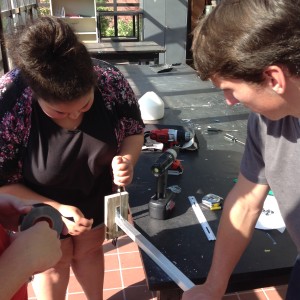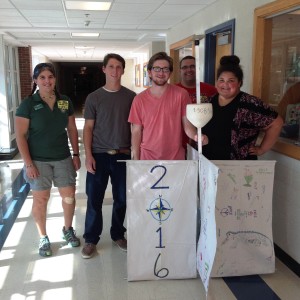 How do ocean currents off New England move? Do they follow the models that we’ve developed through time, or are there subtle nuances of which we should be aware? And why do we need to know how currents move anyway?
How do ocean currents off New England move? Do they follow the models that we’ve developed through time, or are there subtle nuances of which we should be aware? And why do we need to know how currents move anyway?
When your middle or high school becomes part of our Surface Ocean Drifter flotilla, your students will:
*Learn about the Coriolis force, the Trade Winds, ocean gyres, the Ekman spiral, and how ocean currents are formed;
*Learn the history of the National Oceanic and Atmospheric Administration (NOAA) and its role in studying and safeguarding our ocean habitats;
*Understand why drifters are deployed to track the movements of natural and man-made objects on our oceans;
*Use hand tools, measurement tools, adhesives and power tools to construct an ocean drifter from a standardized prototype;
*Track their drifter by satellite in real time and predict its future movements;
*Experiment with basic coding;
*Consider drifter design alterations, the use of different materials and new applications for drifter studies, and
*Explore potential careers in the oceanic and atmospheric sciences.
 The South Shore Natural Science Center partners with NOAA’s National Marine Fisheries Service, Captain John Boats of Plymouth and numerous local fishermen to build and deploy ocean drifters throughout the year to study the movement patterns of cold-stunned sea turtles, harmful algal blooms, and more. The drifter program consists of at least three classroom sessions: an introduction to the project, construction of a drifter, and a follow-up to consider design and applications.
The South Shore Natural Science Center partners with NOAA’s National Marine Fisheries Service, Captain John Boats of Plymouth and numerous local fishermen to build and deploy ocean drifters throughout the year to study the movement patterns of cold-stunned sea turtles, harmful algal blooms, and more. The drifter program consists of at least three classroom sessions: an introduction to the project, construction of a drifter, and a follow-up to consider design and applications.
To get started on your school’s surface ocean drifter adventure or for more information contact Trish DeGiulio, the Science Center’s Director of Environmental Education, at 781-659-2559.